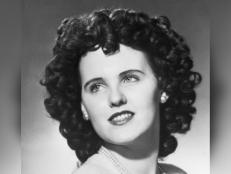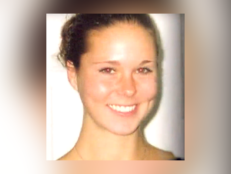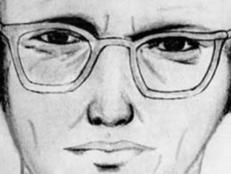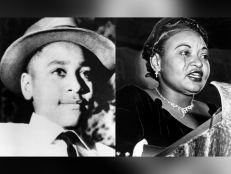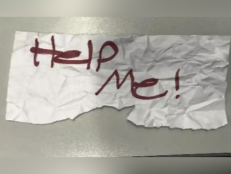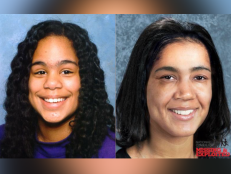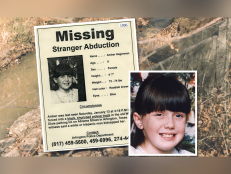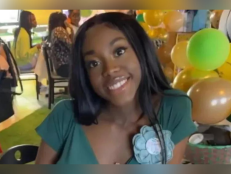These Grisly Dollhouse Crime Scenes From The 1930s & '40s Are Still Helping To Train Investigators

Maryland Office of the Chief Medical Examiner
Frances Glessner Lee was born in 1878 in Chicago but grew up in New Hampshire. She was the heiress to the International Harvester fortune and lived a life of privilege. She had a pretty typical life for a society girl at that time — she had her official debut at 19 and was married three months later. Despite being in an unhappy marriage that ended in divorce, she did have three children. It wasn’t until she was in her forties and on her own, that she was able to focus on what she was really interested in — studying crime and the scientific methods of solving them.
She would host lavish soirees for cops and medical examiners and learn the facts about their cases. She devoted most of her adult life, during the 1930s and ’40s, to designing and building miniature dioramas of crime scenes
The Nutshell Studies of Unexplained Death

Maryland Office of the Chief Medical Examiner
The models, called the Nutshell Studies of Unexplained Death, at first glance, look like dollhouse scenes — miniature slices of life in bedrooms, bathrooms, kitchens, and other mundane situations. At a closer look, one discovers the characters in these scenes are in distress — on the floor, bloodied, hanging in a barn, or drowned in the tub.
She was incredibly detail-oriented and took great pains to make every element match the real crime scene — the position of the corpse, the detail of the blood spatter — in standard dollhouse scale, down to the contents of the wastebaskets. She gleaned information from police reports and included all the facts necessary to solve each crime in the model depicting the crime scene.
A July 1953 article in Popular Mechanics called “Mysterious Death Their Business” pointed out the incredible effort she went to reproduce a newspaper: “Tiny newspapers are made by reducing real ones photographically, making plates, printing them, then stitching top and bottom edges so they can be torn to simulate saw-toothed edges of real ones.”

Maryland Office of the Chief Medical Examiner
Glessner Lee also put special effort into making sure that her dollhouse figures really looked dead, according to the Popular Mechanics article:
“She makes bodies of cloth, stuffed with soft cotton and a core of BB shot – so they’ll be flexible but not so light they’ll sprawl awkwardly and corpselike. Feet and legs are of carved wood. Each corpse is cunningly colored. One may carry the cherry red brought on by carbon-monoxide death; another an ordinary post-mortem purplish caste. The delicate miniature discoloration in bruises on the 1/4-inch neck of a throttled victim is so accurate that a trained examiner can diagnose it immediately.”

Maryland Office of the Chief Medical Examiner
Her work was so good that her Nutshell Studies are still used to train crime investigators. In 1945 she donated the models to Harvard. The Harvard Associates in Police Science training program provides instruction to homicide cops, private investigators, NCIS, attorneys, and other professionals studying forensic investigation. About 80 students at a time to analyze the Nutshell Studies to learn how to use crime scenes to solve cases. In 1966, the dollhouses were moved to the Maryland Office of the Chief Medical Examiner in Baltimore, and the seminars are still held today.
Bruce Goldfarb is the executive assistant to the Chief Medical Examiner for the State of Maryland. His job also encompasses being the caretaker of the dioramas, even down to changing their light bulbs. CrimeFeed talked to Goldfarb about the Nutshell Studies:
CrimeFeed: How many Nutshells are in the collection?
Goldfarb: There are 18 dioramas in the Nutshell Studies. One Nutshell may have been damaged or destroyed in the 1960s. There was thought for a long time that there was a missing Nutshell, but it turned out not to be missing at all. A twentieth Nutshell was found in the attic of The Rocks, Frances Glessner Lee’s Littleton, New Hampshire, estate (now a park and working farm owned by the state). That Nutshell was put on display at the Wellcome Museum in London during 2015, and is now back in Littleton. I hope to see this Nutshell this summer. There were probably at least one or two more. I’ve seen photos and details that aren’t a part of the 18 in the Studies, the one at The Rocks, or the one that was destroyed. A family member or somebody else may have them, or they may have been thrown out. Who knows?
Do we know why Glessner Lee focused on crime scenes involving the seedier side of life, and lower-class haunts such as boarding houses?
I wish I could ask her. Was it morbid curiosity about how the other half lives? I don’t know. She chose to document prostitutes, drunks, poor, and marginalized people. She knew wealth and privilege. I think these people were more interesting. Anybody can make a pretty dollhouse. The home of a wealthy person — clean, orderly, spotless, and maintained — doesn’t tell you much about a person.
Can you share any specifics of some of her amazing detail work?
I’ve been looking at these things for years and still make discoveries. She was very creative about how she acquired props. Some, I understand, are Cracker Jack prizes. In the Three Room Dwelling, in the kitchen, beneath the cabinets over the sink, hangs a hand mixer that looks like it really cranks. That’s a charm bracelet charm, made of gold. She painted it to look like steel.

Maryland Office of the Chief Medical Examiner
In the bedroom of the same diorama, there is a sewing machine with a flywheel that looks like it turns. A few months ago I realized that there is a needle in the sewing machine, and that needle is threaded, and there’s a tiny spool of thread. The whole thing is about an inch long.
Do we know why Glessner Lee chose the specific crimes she did to illustrate?
They are not obvious. They take some time to view and think about. She didn’t want to have somebody glance at a Nutshell and say, “Got it.” They are overwhelming in detail. You aren’t sure what you’re supposed to pay attention to. It isn’t uncommon for a homicide to be staged like a suicide, or a suicide staged to look like a homicide. So in some cases, the takeaway is that there is an inconsistency between what you see and what you’ve been told. You really need to look, you need to think, and you need to force yourself to keep an open mind.

Maryland Office of the Chief Medical Examiner
What is it about the Nutshell Studies that keep them relevant today?
They still achieve something that can’t be done by any other media — not with film, not with still images, not even with the computer simulation of today. They are about as realistic as you can get to an actual crime scene. In this respect, they are still useful as teaching tools. You’re left on your own devices to look at whatever you want, for as long as you want, from whatever angle you want. Come back the next day, and it’s still the same. They also remain relevant because the facts of violent death have changed very little. There is still a short list of ways of killing somebody — bullets, stabbing, strangling, poisoning, etc. Sadly, this is eternal. Some of the Nutshells could be updated with modern appliances. Throw in a tiny computer and some smartphones. Very little about everything else that matters has changed.
The Nutshell Studies of Unexplained Death aren’t open to the public, but private visits can be arranged by emailing info@ocmemd.org.
Update (February 2, 2018):
For the first time ever, all known Nutshell Studies of Unexplained Death were exhibited together, at the Smithsonian American Art Museum’s Renwick Gallery in Washington, D.C. A formerly “lost” Nutshell was reunited with the collection. The dioramas were meticulously cleaned and restored and had their lighting updated.
Whereas the collection is normally only able to be viewed by appointment through the Maryland Office of the Chief Medical Examiner, it was on exhibit for the public from October 20, 2017 through January 28, 2018.
For further exploration, there is a great documentary on the dioramas called Of Dolls & Murder, narrated by provocateur John Waters.
Watch Now:
